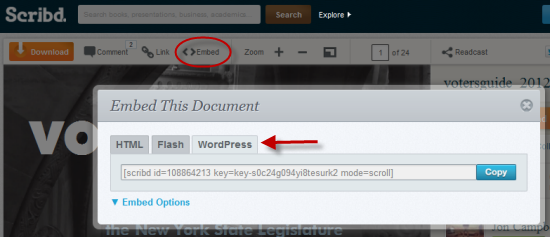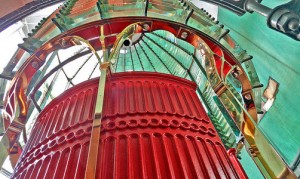The Q & A WordPress plugin lets you easily add a configurable question & answer dialog on your site. First you create individual “FAQ” custom posts, where the post title is the question, and the post content body is the answer. You can assign categories to each FAQ post, and when you want to display your questions and answers, you use a simple short code. This is a neat way to provide a quick, compact Q&A dialog for your readers to quickly get onboard with new concepts, or create a review page that re-enforces important concepts.
Getting Started
 When you activate the plugin, you’ll see a new section (“FAQs”) added to your dashboard (see image, left). Click on “Add New” to add a new Question & Answer. Remember – the title is the question, the content is the answer. You’ll need to repeat this process for each Q & A you add. To display your compiled list of questions and answers, use the following short code in any page or post:
When you activate the plugin, you’ll see a new section (“FAQs”) added to your dashboard (see image, left). Click on “Add New” to add a new Question & Answer. Remember – the title is the question, the content is the answer. You’ll need to repeat this process for each Q & A you add. To display your compiled list of questions and answers, use the following short code in any page or post:
Optionally, you can qualify the short code with a category, which will display only the Q&A’s in that category. That code looks like this (where “faq1” is the name of one of your categories):
Short codes can be sensitive to copy/paste operations – so if you have troubles (like I did), retype the short code rather than pasting what you copied.
The answer to your question is the post content, and it can contain images, links, text, and embedded video – anything that a normal post or page can contain. If you have any problems, let us know at the Commons or check out the plugin’s own support forum.
Settings
If you go to your Dashboard and click Settings>>Q&A, you should see the following options that help you configure how you want your FAQs to appear. If you want, you can create a FAQ page dedicated to questions and answers. Or you can simply integrate your Q&A’s within posts and pages. (Hover over each question mark in your dashboard for handy tooltips that let you know what each option does).
Here are a couple Q & A’s to show what the plugin can do:
How do Cats Purr?
from Wikipedia:
The mechanism by which cats purr is ambiguous. This is partly because the cat has no unique anatomical feature that is clearly responsible for the sound.[2] One hypothesis, backed by electromyographic studies, is that cats produce the purring noise by using the vocal folds and/or the muscles of the larynx to alternately dilate and constrict the glottis rapidly, causing air vibrations during inhalation and exhalation.[3] Combined with the steady inhalation and exhalation of air as the cat breathes, a purring noise is produced with strong harmonics.[4] Purring is sometimes accompanied by other sounds, though this varies from cat to cat; in the audio samples that accompany this article, the first cat is only purring, while the vocal production of the second cat contains low level outbursts sometimes characterized as “lurps” or “yowps”. Domestic cats purr at a frequency of 25 to 150 vibrations per second. Eklund, Peters & Duthie (2010), comparing purring in a cheetah (Acinonyx jubatus) and a domestic cat (Felis catus) found that the cheetah purred with an average frequency of 20.87 Hz (egressive phases) and 18.32 Hz (ingressive phases), while the much smaller domestic cat purred with an average frequency of 21.98 Hz (egressive phases) and 23.24 Hz (ingressive phases). Schötz & Eklund (2011) studied purring in four domestic cats and found that the fundamental frequency varied between 20.94 and 27.21 Hz for egressive phases and between 23.0 and 26.09 Hz for ingressive phases. Schötz & Eklund (2011) also observed considerable variation between the four cats as regards relative amplitude, duration and frequency between egressive and ingressive phases, but that this variation generally occurred within the same general range. For film clips of purring waveforms, see purring.org. In a follow-up study of purring in four adult cheetahs, Eklund, Peters, Weise & Munro (2012) found that egressive phases were longer than ingressive phases in four cheetahs. Likewise, ingressive phases had a lower frequency than egressive phases in all four cheetahs. Mean frequency were between 19.3 Hz and 20.5 Hz in ingressive phases, and between 21.9 Hz and 23.4 Hz in egressive phases. Moreover, the amplitude was louder in the egressive phases in four cheetahs.
What Was the Bathtub Hoax?
from Wikipedia:
On December 28, 1917, an article titled “A Neglected Anniversary” by H. L. Mencken was published in the New York Evening Mail. It claimed that the bathtub had been introduced into the United States as recently as 1842, the first ones having been made of mahogany lined with lead. The article went on to describe how the introduction of the bathtub initially was greatly discussed and opposed until President Millard Fillmore had a bathtub installed in the White House in 1850, making the invention more broadly acceptable. The article was entirely false but was still being widely quoted as fact years later, even as recently as January 2008 when a Kia TV ad referenced the story with no mention of its fictional nature.











